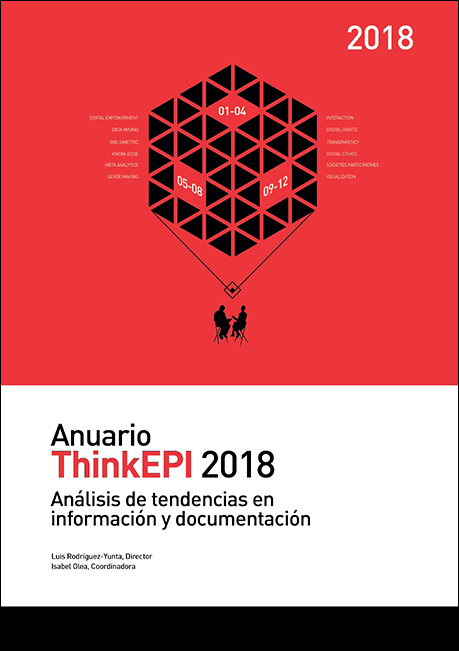El funware en los sitios de recomendación social: características, claves e inconvenientes
DOI:
https://doi.org/10.3145/thinkepi.2018.36Palabras clave:
Funware, Gamificación, Sitios de recomendación social, Crowdsourcing, Economía conductual.Resumen
El funware es una estrategia motivadora que consiste en usar recompensas típicas de los juegos en entornos virtuales no lúdicos para aumentar la participación de una comunidad. Así, incentiva en los usuarios acciones constructivas por las que estos obtienen un reconocimiento en forma de distinciones simbólicas, como puntos o insignias. La estrategia se ha aplicado con éxito en una multitud de plataformas, especialmente en sitios de recomendación social como Foursquare, TripAdvisor y el programa Google Local Guides. Este trabajo identifica en qué elementos motivadores se sustenta la ludificación (gamificación), analiza los citados sitios de recomendaciones, presenta algunas claves para el diseño de un funware eficaz, y señala los límites y peligros de esta estrategia.
Citas
Aparicio, Andrés-Francisco; Gutiérrez-Vela, Francisco-Luis; González-Sánchez, José-Luis; Isla-Montes, José-Luis (2012). "Analyisis and application of gamification". En: Interacción 2012: XIII Congreso Internacional de Interacción Persona-Ordenador. Elche, 3-5 octubre. ISBN: 978 1 4503 1314 8 https://doi.org/10.1145/2379636.2379653
Bartle, Richard (1996). "Hearts, clubs, diamonds, spades: Players who suit MUDs". Journal of MUD research, v. 1, n. 1. http://mud.co.uk/richard/hcds.htm
Bogost, Ian (2014). "Why gamification is bullshit". En: Walz, Steffen P.; Deterding, Sebastian (eds.). The gameful world. Cambrige, Mass.: MIT Press, p. 65-80. ISBN: 978 0262028004
Chou, Yu-kai (2015). Actionable gamification: beyond points, badges, and leaderboards. [California]: Octalysis Media.
Deterding, Sebastian; Khaled, Rilla; Nacke, Lennart; Dixon, Dan (2011). "Gamification: toward a definition". En: CHI 2011 Gamification Workshop Proceedings. Vancouver, 7-12 mayo. http://gamification-research.org/wp-content/uploads/2011/04/02-Deterding-Khaled-Nacke-Dixon.pdf
Frí¶hlich, Thomas (2017). "Play while you work: Productive play for digital content creation". En: CHI Play 17 Extended Abstracts. Publication of the Annual Symposium on Computer Human Interaction in Play. Amsterdam, 15-18 octubre. ISBN: 978 1 4503 5111 9 https://doi.org/10.1145/3130859.3133228
Gómez-Díaz, Raquel; García-Rodríguez, Araceli (2017). "Bibliotecas, juegos y gamificación: una tendencia de presente con mucho futuro". Anuario ThinkEPI, v. 12, pp. 125-135. https://doi.org/10.3145/thinkepi.2018.13
Hamari, Juho; Koivisto, Jonna; Sarsa, Harri (2014). "Does gamification work? A literature review of empirical studies on gamification". En: 47th Hawaii International Conference on System Science. https://doi.org/10.1109/HICSS.2014.377
Huizinga, Johan (1938). Homo ludens. Madrid: Alianza. ISBN: 978 84 206 3539 2 https://goo.gl/ZP9Enx
Kí¤rpuk, Kavel (2017). "5 mistakes to avoid in gamification". Art + marketing, 4 de junio. https://artplusmarketing.com/ee75d6fb96c1
Kim, Tae-Wan (2015). "Gamification ethics: exploitation and manipulation". En: Proceedings of the ACM SIGCHI Gamifying Research Workshop. https://goo.gl/4KUDZL
Lafrenií¨re, Mark-André K.; Verner-Filion, Jérémie; Vallerand, Robert J. (2012), "Development and validation of the Gaming Motivation Scale (GAMS)". Personality and individual differences, v. 53, n. 7, p. 827-831. https://doi.org/10.1016/j.paid.2012.06.013
Landers, Richard N. (2014). "Developing a theory of gamified learning: Linking serious games and gamification of learning". Simulation & gaming, v. 45, n. 6, p. 752-768. https://doi.org/10.1177/1046878114563660
Looyestyn, Jemma; Kernot, Jocelyn; Boshoff, Kobie; Ryan, Jillian; Edney, Sarah; Maher, Carol (2017). "Does gamification increase engagement with online programs? A systematic review". PLoS one, v. 12, n. 13. https://doi.org/10.1371/journal.pone.0173403
Marczewski, Andrzej (2017). "The ethics of gamification". XRDS Crossroads: the ACM magazine for students, v. 21, n. 1, pp. 56-59. https://doi.org/10.1145/3123756
Pérez, Oliver (2012). "Ludificación en la narrativa audiovisual contemporánea". Telos, n. 93. https://goo.gl/iegz9z
Posada-Prieto, Fernando (2013). "Gamificación educativa". CanalTIC.com, 9 septiembre. http://canaltic.com/blog/?p=1733
Schell, Jesse (2010). "When games invade real life". TED, febrero. https://www.ted.com/talks/jesse_schell_when_games_invade_real_life
Schí¶bel, Sofia; Sí¶llner, Matthias (2016). "How to gamify information systems: Adapting gamification to individual user preferences". En: Information systems as a global gateway: 24th European Conference on Information Systems. http://aisel.aisnet.org/ecis2016_rip/20
Sigala, Marianna (2015). "The application and impact of gamification funware on trip planning and experiences: the case of TripAdvisor´s funware". Electronic markets, v. 25, n. 3, p. 189-209. https://doi.org/10.1007/s12525-014-0179-1
Werbach, Kevin (2013). Gamificación. Barcelona: Fundació Factor Humí . https://goo.gl/Xt7Zm9
Zenn, Jacqueline (2017). "Understanding your asudience: Bartle player taxonomy". GameAnalytics, 21 noviembre. https://gameanalytics.com/blog/understanding-your-audience-bartle-player-taxonomy.html
Zichermann, Gabe; Cunningham, Christopher (2011). Gamification by design: Implementing game mechanics in web and mobile apps. Sebastopol: O´Reilly Media. ISBN: 978 1449397678
Zichermann, Gabe; Linder, Joselin (2010). Game-based marketing: Inspire customer loyalty through rewards, challenges and contests. Hoboken, NJ: John Wiley & Sons. ISBN: 978 0 470 56223 9
Zichermann, Gabe; Linder, Joselin (2013). The gamification revolution: how leaders leverage game mechanics to crush the competition. Nueva York: McGraw-Hill. ISBN: 978 0071808316


